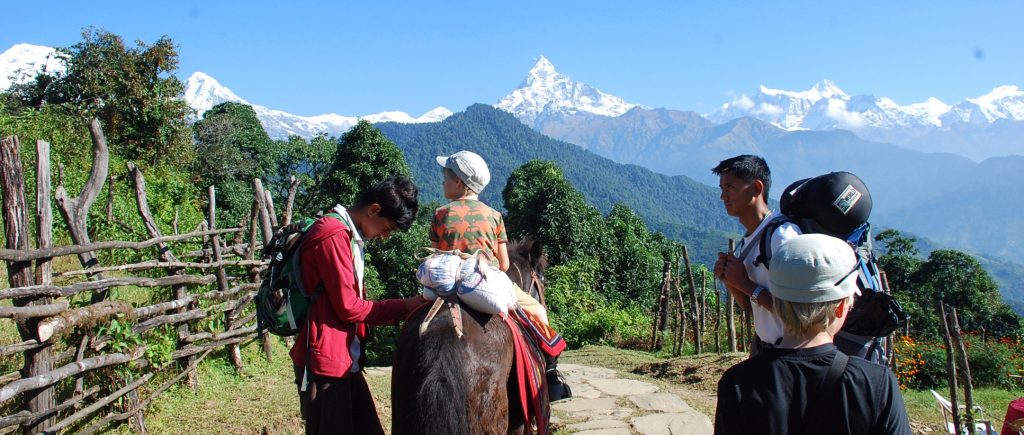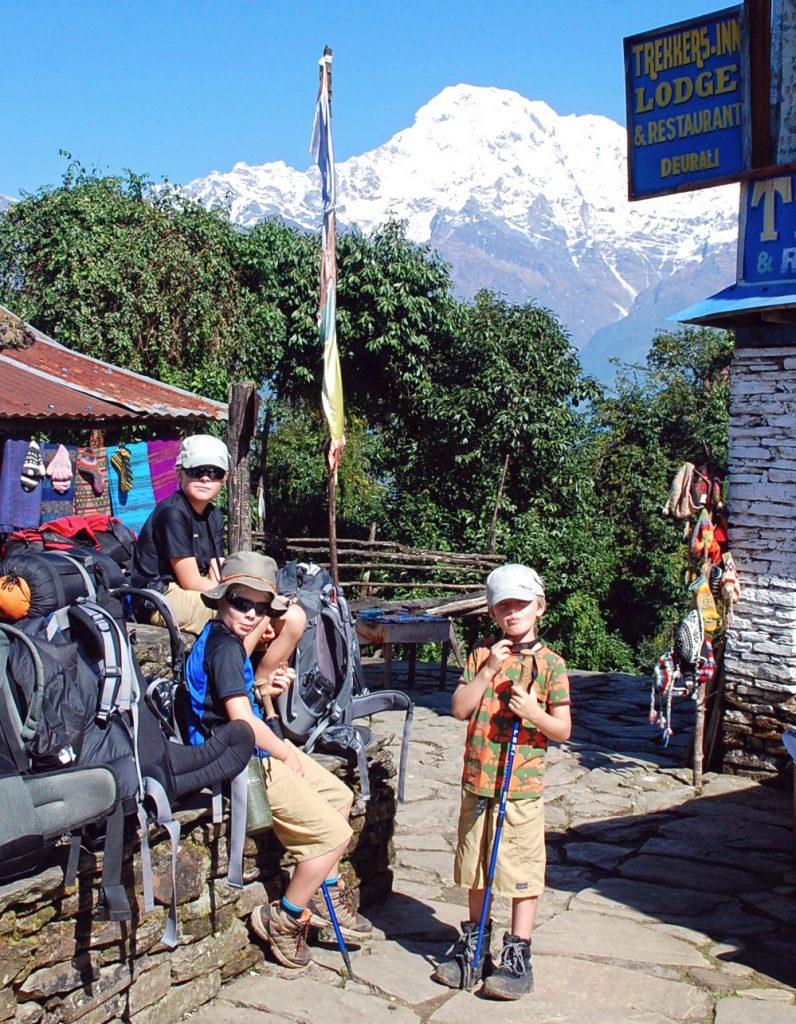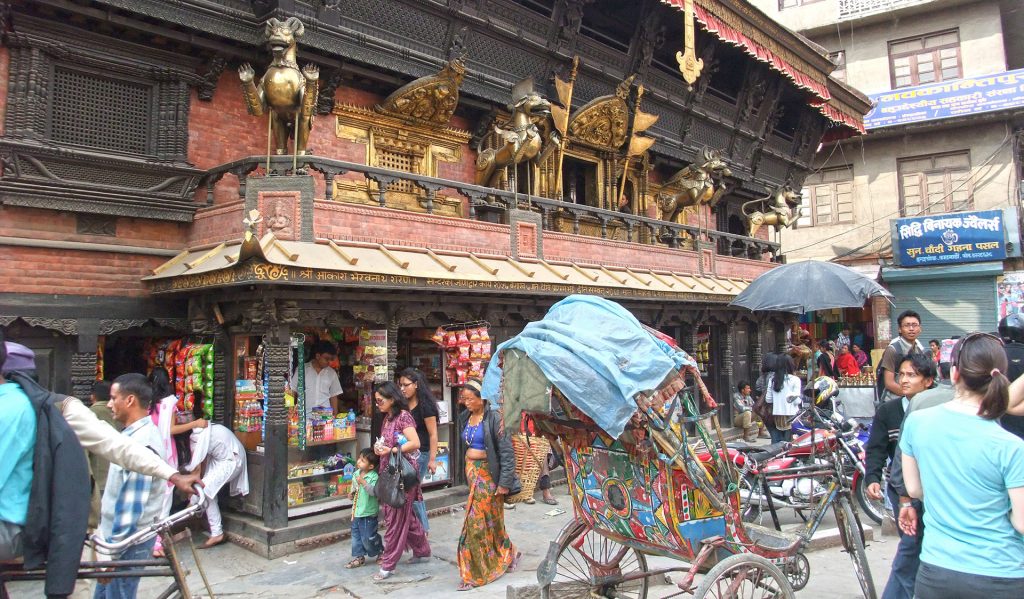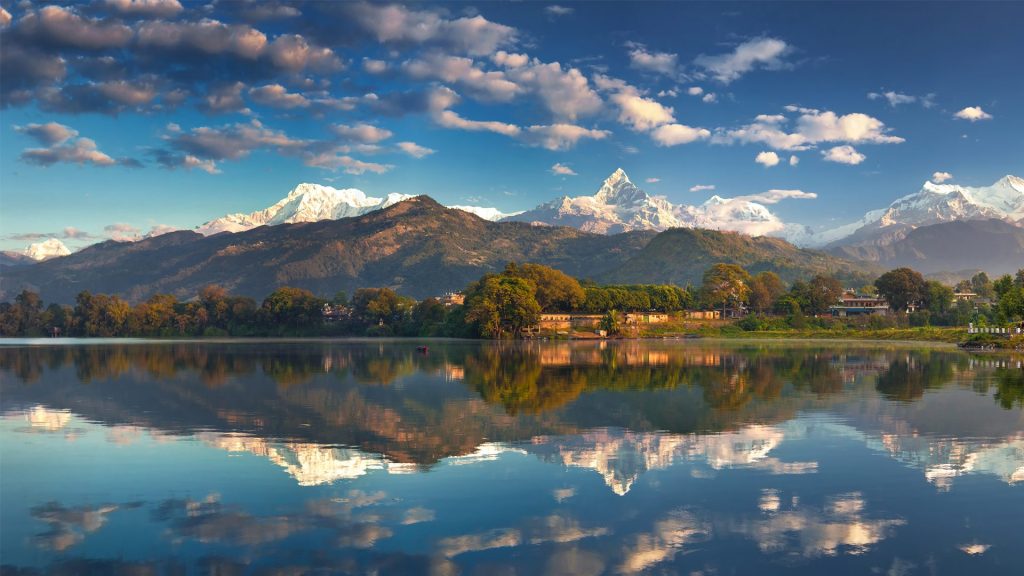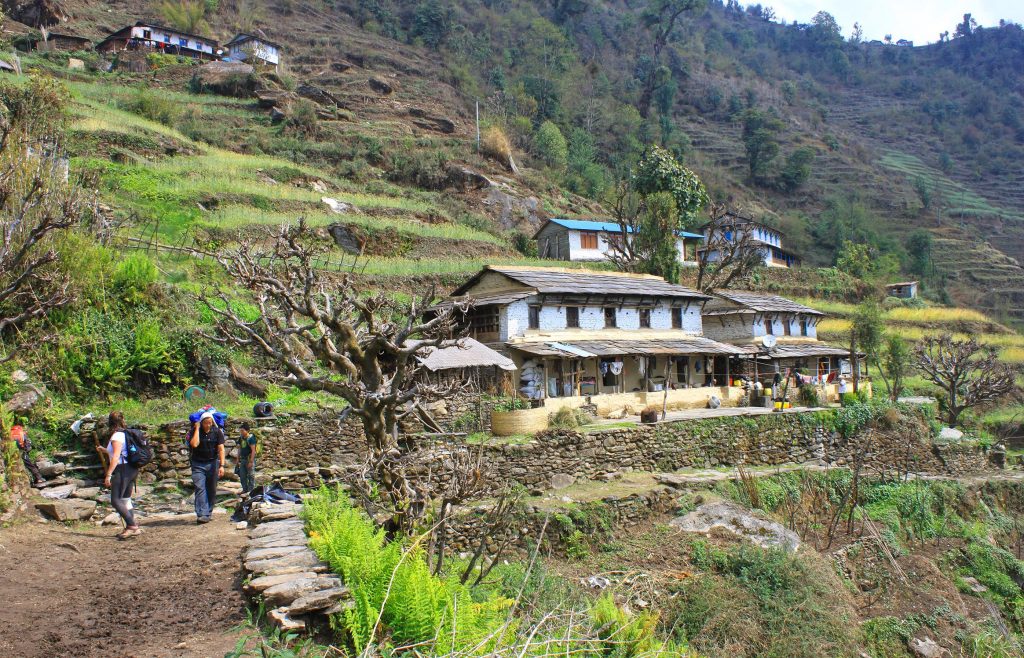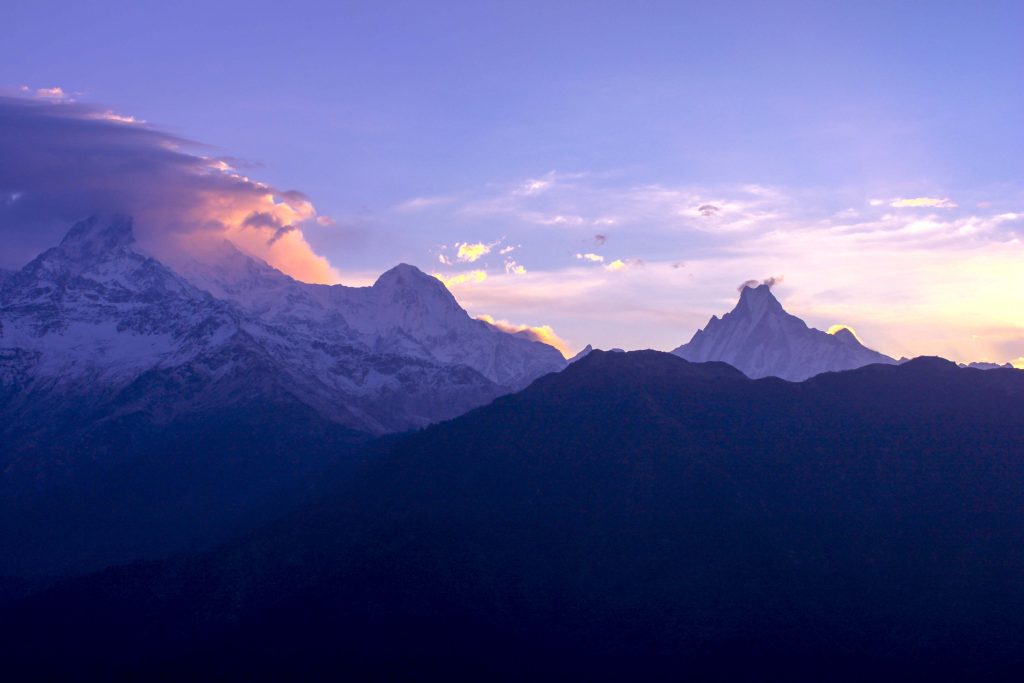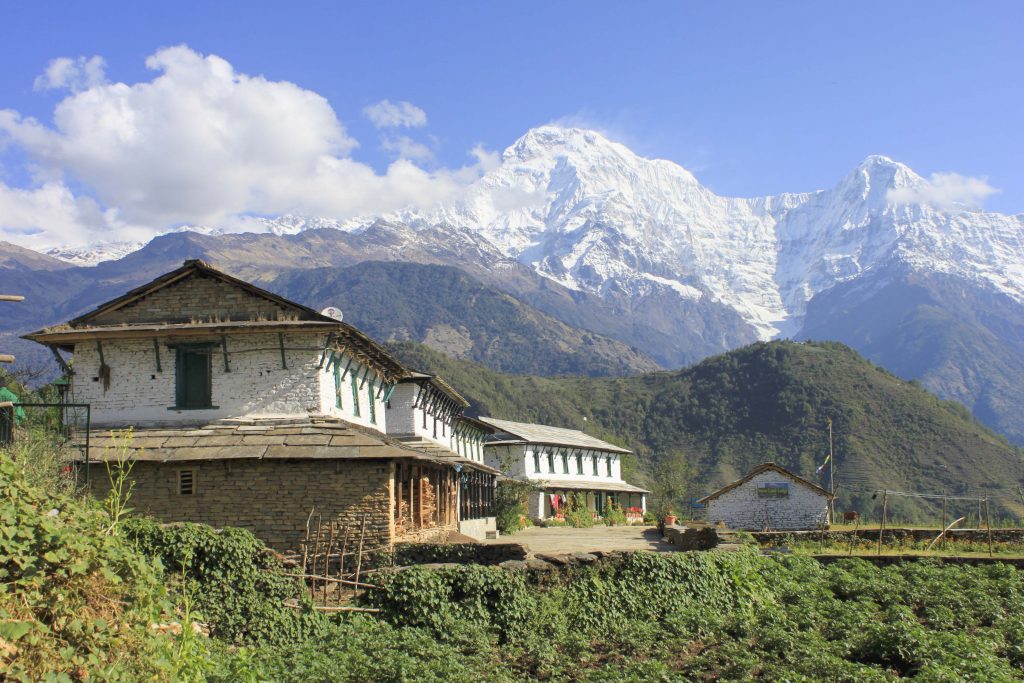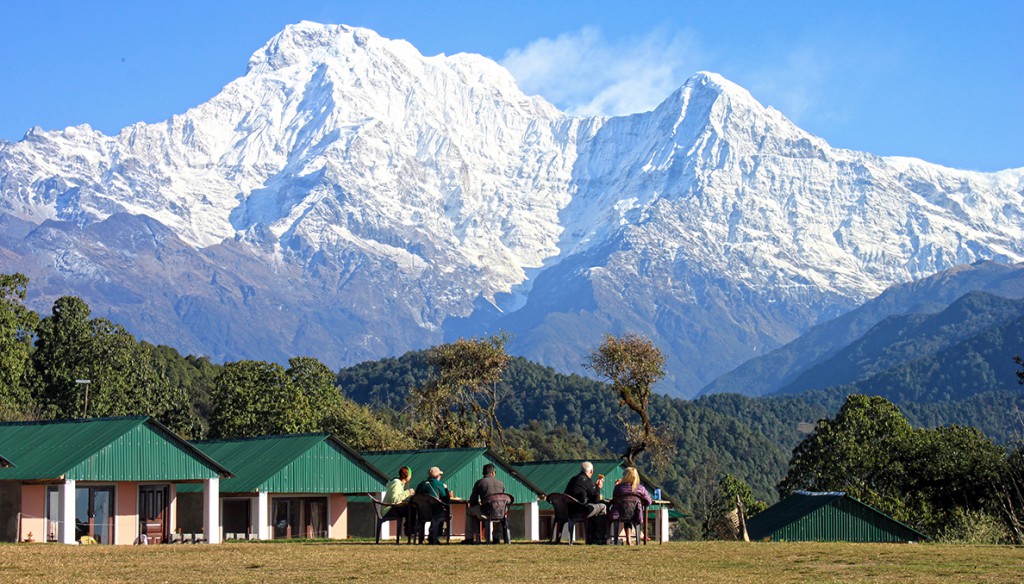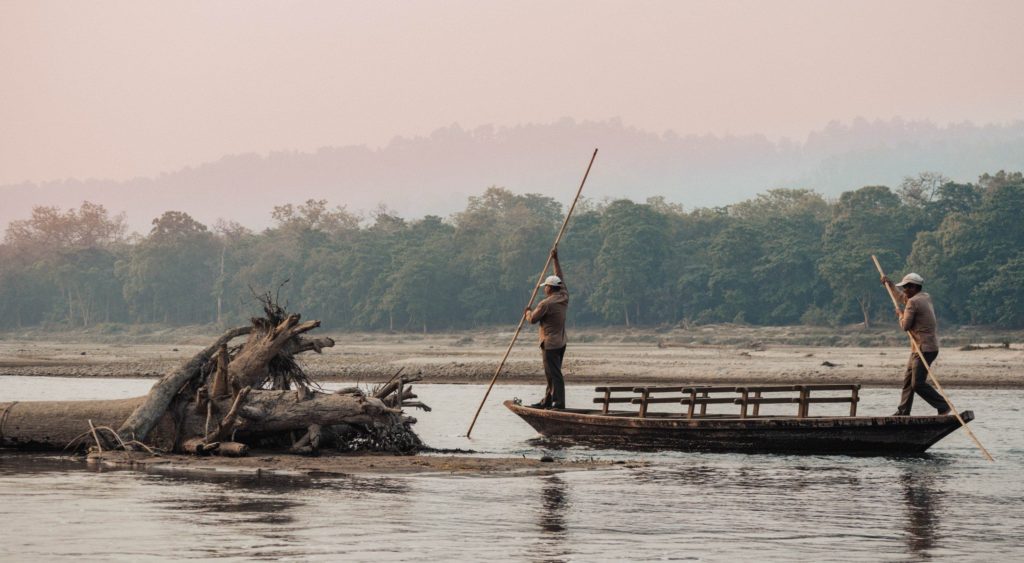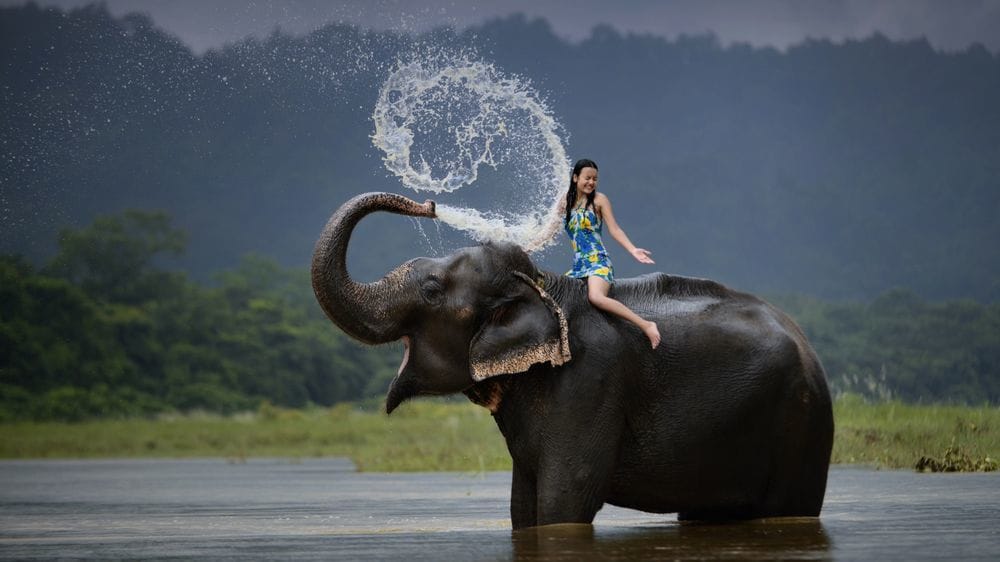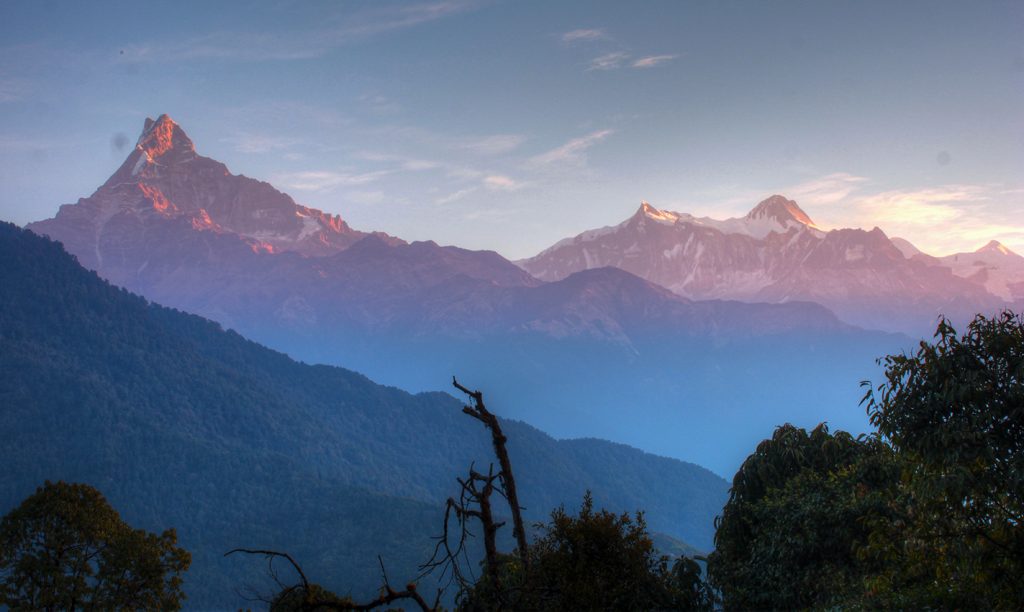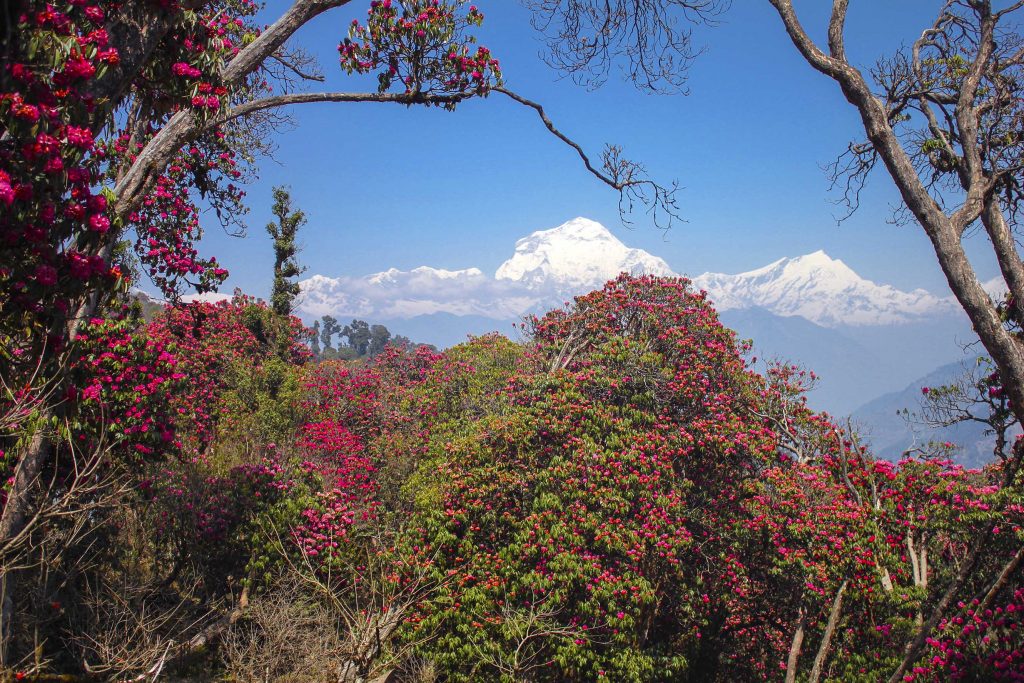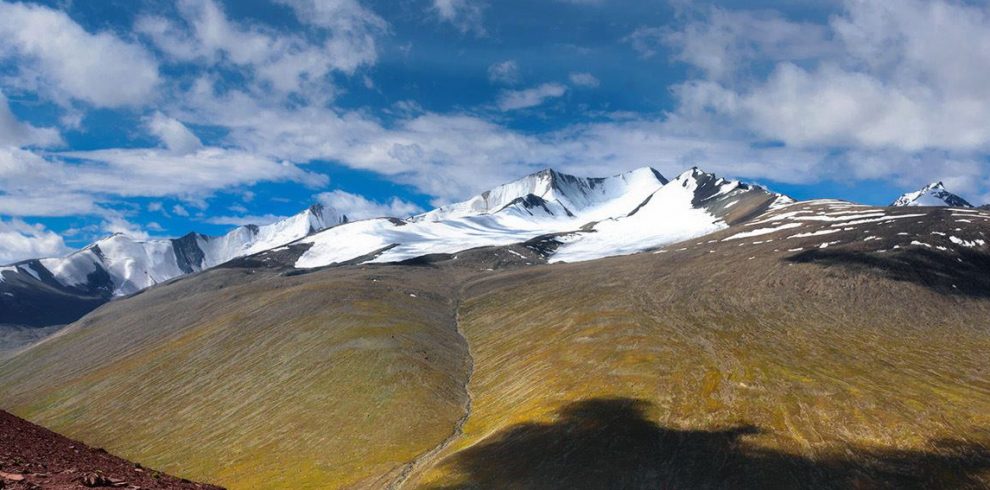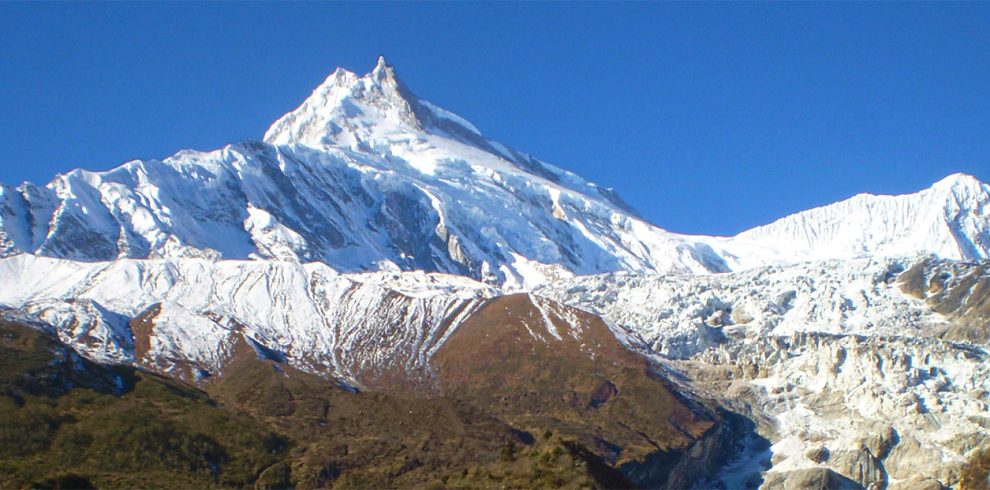Annapurna region is undeniably one of the most sort out destination for travellers around the world. Magnificent mountain views, ecological and cultural diversity, ethnic villages with terraced farmland and hospitable local people make this an exciting and fascinating trek.
This adventure offers you an awesome experience of trekking in this beautiful Annapurna region of the Himalayas along with an exciting Jungle Safari in the subtropical jungle of the lowlands of Nepal.
After this fascinating trek, we drive to Chitwan for a 3 day jungle safari with many exciting activities, where you can see one-horned rhinos, and if lucky, you can see bison, sloth bears and leopards. Sighting of the Royal Bengal Tiger is an extremely rare sight. The elephant ride itself is worthwhile.
Overview
This trek is equivalent to moderate walks in moderate altitude (at around 3000m+.) The walks can be 5 to 6 hrs each. Good physical condition is required. In fact anyone with a sound health and reasonably fit can do the trek. Still a little training prior to trek is required so you can do it without much difficulty. This trip is a fun and outdoor experience which makes it a perfect family adventure.
Highlights
- 7 days trek in the Annapurna region
- Sunrise view from Poonhill- view of three 8000 m+ mountains and several 7000 m+ peaks
- Exploration of the beautiful town of Pokhara with optional activities as paragliding/ biking/ or just relaxing
- 2 nights/ 3days jungle safari in Chitwan.
Itinerary
Elevation of Kathmandu: 1340m
Once you reach KTM airport and finish with the immigration and custom formalities be prepared to confront the confusion outside the airport which is common in most of the south Asian countries. As you walk out of the Exit door into the passenger pick up area you will see hundreds of people with different sign boards in their hands, taxi drivers looking for fares, hotel touts looking for customers and porters trying to help with the luggage for tips. Please remain calm and do not walk out of the restricted area into the crowd straight away. Remain there and try to find the Hi On Life sign board. Once you spot it, walk straight to the signboard and identify yourself. From here we will take care of you. When you arrive to your hotel you will be briefed about your activities and “do’s and don’ts” while your stay in Kathmandu. We will also collect some documents from you. Please have the following things handy when arriving.
Travel/ Medical Insurance (photo copy)
2 passport size photos
Photocopy of your passport.
In the evening we will go for a traditional Nepali dinner at Kathmandu’s finest Nepali restaurant.
Kathmandu, the capital city of Nepal was once thought to be the fabled and inaccessible Shangri-La. It is now a hub for independent travelers as well as a growing vacation spot catering to all budgets. The city with a population of 2.5 million stands at an elevation of approximately 1,400 meters (4,600 ft) in the bowl-shaped Kathmandu Valley of central Nepal. It is surrounded by four major hills: Shivapuri, Phulchoki, Nagarjun, and Chandragiri. Kathmandu was ranked third among the top 10 travel destinations on the rise in the world by TripAdvisor and ranked first in Asia.
After breakfast you will be taken for a half day city tour where you will be visiting some
historical temples and monuments. You will end your sightseeing with a lunch.
After your lunch you will return to your hotel and your Group leader will give you your trek
briefing and issue you your 'trek pack' consisting of a duffle bag, down jacket/or fleece sweater,
sleeping bag, inner liner for your sleeping bag and rain poncho. Your afternoon is free for you
to do your packing and purchasing your last minute items for your trek.
Flight Kathmandu to Pokhara: 30 mins
Elevation of Pokhara: 890m
We depart from the hotel early in the morning and are transferred to the domestic terminal at Kathmandu airport. From here we fly to Pokhara, which is a spectacular flight, flying west,
parallel to the mountain range with a flight time of about 30 minutes. After arrival at Pokhara we will be transferred to our hotel in the heart of Lakeside.
Pokhara is the second largest city in Nepal. With spectacular scenery, adventure activities, and accommodation and food choices galore, Pokhara is Nepal’s number 1 adventure and leisure city. Pokhara is well-known as a starting point for various trekking trail and expeditions in the Annapurna making it a favorite hub where travelers and adventure lovers from around the world meet. Other than being famous for being a starting point of some of the best treks in the world, Pokhara also offers adrenaline activities such as ultralight flying, paragliding, skydiving, ziplining, bungee jumping, rafting and kayaking. There are plenty of souvenir shops.
In the evening you can eat at the restaurants along the lakeside where you can meet travelers from around the world. Recommendations- The Olive Café, Moondance, OR2K, Roadhouse Café etc. Your Group Leader will arrange a dinner at one of these fantastic restaurants.
Drive Pokhara airport to Nayapul: 42 km, 1 hour 30 mins
Elevation of Nayapul: 1100m
Elevation of Ulleri: 1960m
Trek Nayapul to Ulleri: 10 kms, 3 to 4 hours approx.
From Pokhara we drive to Nayapul, and start our trek. We need to make entries of our permits and register trekkers details at the Birethani check post which is just about km from Nayapul. After completing entry formalities, we begin our trek. The first half of the trek is along the river side on undulating path. We will stop for lunch at Tikhedhunga. After lunch it is a steady climb on stone stair case for about an hour and a half to Ulleri. Ulleri is a small village with lodges and few local houses.
Trek Nayapul to Ulleri: 6 kms, 3 hours approx.
Elevation of Ghorepani: 2870m
Today the trail is mostly a climb on stone staircase through a forest. As we climb up the vegetation changes to more semi alpine with rhododendron, juniper and birch trees. Upon arrival at Ghorepani, we check into our lodge and have lunch. After lunch, you are free to explore the town.
Ghorepani used to be a rest stop where ancient traders found water (pani in Nepali) for their horses (ghora in Nepali), thus leading to the nomenclature Ghorepani. Today it is a bustling town with many lodges, souvenir shops, bakery cafes, a school a health post. The main income source for residents of the village is now tourism.
Ghorepani – Poonhill- Ghorepani: 3 km, 1 hour 30 mins + 45 mins to 1 hour stop for sunrise view
Elevation of Poonhill: 3200m
Trek Ghorepani to Tadapani: 6 kms, 3 to 4 hours approx.
Elevation of Tadapani: 2700m
Today we wake up very early, and after a cup of tea, climb the well trodden stony steps up to Poon Hill. It takes us about 1 hour to reach the top and from here we get spectacular sunrise views of the Annapurnas and Dhaulagiri. After spending about an hour here we go back down to Ghorepani. There is no Yoga practice this morning as we do want to reach our destination in daylight so after packing your bags, we eat breakfast and hit the trail. From Ghorepani we retrace our steps back to Tadopani, along the ridges, stony steps and through dense forest. It is a beautiful and tranquil walk.
Trek to Ghandruk: 6 kms, 3 hours approx.
Elevation of Ghandruk: 1950m
After breakfast we begin our walk along the ridge and through a rhododendron forest. The walk is fairly easy and very beautiful with little streams and a whole new feel to the trek. It is one of the
most peaceful days of walking and after a couple of hours through the forest we reach Kymrong Danda. There are a few lodges here and we have lunch. From here we descend to Ghandruk an
ethnic Gurung Village. We settle into our accommodation and the afternoon is free with lot’s to do and see. The carpet and handicraft factory, run by the Ama’s group (mother’s self-help
group) is worth visiting. The ACAP headquarters show a documentary about the Annapurna area and issues regarding local conservation, which is also worth viewing.
Trek to Tolka: 5 kms, 4 hours approx.
Elevation of Tolka: 1700m
From Ghandruk the trail and descends about 400 m on stone staircase to Modi Khola. After crossing the river the trail climbs steeply up on stone steps. We stop for lunch at Landruk. After lunch it is an easy one hour trek to Tolka. Tolka is a charming little village with a few lodges and a school.
Trek: 8 kms, 4 hours approx.
Elevation of Australian Camp: 2000m
From Tolka the trail passes through a forest on easy generally flat trail for about an hour and a half to Bhaisikharka. Here we have an option to either follow the jeep trail which is generally flat and easy, or follow the old trail which climbs up to Pitam Deurali through the forest on stone staircase. The old trail is about 45 mins longer and it takes about three and a half hour to reach Australian Camp.
A few decades ago, many Australian trekkers used to camp at the grassy meadows of this place, hence it got the name Australian Camp. There are breathtaking views of the Annapurna range from Australian Camp. We can celebrate the last night party with the staff in the evening.
a: 35 kms; 1 hour 30 mins
The trail descends through a forest in the beginning and then through a village to reach Kande. Our van will be waiting for us at Kande from where we will drive for an hour and a half to Pokhara. Upon arrival at Pokhara we will check in to our hotel, the rest of the afternoon is free to explore at leisure.
Drive: 150 Kms, 5 hours
The drive is scenic passing by beautiful paddy fields and charming settlements along the river side. After about 90 kms drive we reach Muglin where the highway diverts towards Chitwan. Upon arrival at Chitwan we check in to our hotel at Green Park where you will be briefed about your activities at the jungle.
The rest of the day you will join the scheduled jungle activities.
The jungle activities includes:
Nature walk
Canoe ride
Bird watching
Elephant Safari (optional)
Tharu village tour
Cultural dance show
Elephant bathing
Tharu village tour
Drive: 175 Kms, 6 hours
After breakfast we depart the hotel and drive to Kathmandu. We arrive Kathmandu at around 3 to 4 Pm. Upon arrival to Kathmandu we check in to our hotel. The rest of the afternoon is free to explore the town at leisure for shopping souvenirs etc.
According to your flight time we will drive you to Tribhuwan International Airport 3 ½ hours before your flight time.
Price includes
- All internal transportation, in private vehicle.
- Services of English speaking guide.
- Porter’s and sherpa’s assistance.
- 3 nights in tourist class hotel on bed and breakfast basis while in Kathmandu.
- Welcome dinner.
- Half day guided city tour with lunch.
- Kathmandu to Pokhara flight
- 2 nights in tourist class hotel on bed and breakfast basis while in Pokhara.
- Use of a personal trek pack consisting of a duffle bag, down jacket and sleeping bag with a fleece inner-liner.
- All meals while on trek.
- Afternoon tea/coffee service on arrival at the lodge.
- Twin share accommodation in trekking lodges with shared bath and toilet facilities.
- 2 nights / 3 Days Jungle Safari Package with all meals and Transportation to and back from Chitwan in Private A/C Vehicle
- Transportation Chitwan to Kathmandu in Private A/C Vehicle
- Annapurna Conservation fee.
- TIMS (Trekkers Information Management) fee
- Staff insurance, tourist service fee and all taxes applicable as per state law.
Price Excludes
- Personal accident and rescue insurance. You must provide your own rescue insurance
- Mineral water, beer, soft drinks and extra tea/coffee outside of normal meal times.
- Private room accommodation in Kathmandu unless a single supplement is paid.
- Optional tips to guides and porters.
- International airport departure taxes.
- Visa costs.
- Helicopter evacuation in the unlikely situation, although we do arrange for it and
- make the necessary documents so that you can claim from your insurance.
Map
About Nepal
Nepal, a tiny country, nestled in the Himalayas between India and China, is one of the most diverse and fascinating countries in the world. Covering an area of only 147,181 sq. km, Nepal encompasses the world’s highest mountains and the deepest valleys as well as low elevation rain forest. Although the width of the country is only 200Km North to South, Nepal has the highest altitude variation of any country on earth, from 20m above sea level to 8848m above sea level (Top of Everest).The country is divided in to 3 elevation Zones viz. the low Terrain, the midhill region and the high Himalayas, which contains 1/3 of the Himalayan range with 9 of the world’s highest mountains. This wide diversity of landform gives Nepal an incredible wealth of flora and fauna. Nepal is not only famous for its landscape but also renowned for the friendliness of its people.
The people of Nepal are as variable and intriguing as the country’s geography. There are more than 37 ethnic groups with their own language and culture. Hinduism is the official religion, which the majority of the people practice. Many people throughout the country are Buddhist and the two religions have co-existed in harmony over the ages. A small number of people practice Christianity and Islam. In 2016- Nepal has been listed as the No 1 travel destination in the world!
Nepal at a glance:
- Longitude: 26’12’ North to 30’27’ NorthLatitude: 80 degree 4′ East to 88 degree 12′ East
- Population: 24 million
- Capitol: Kathmandu Area: 147,181 sq. km.
The Annapurna
The Annapurna is a mountain range in the Himalayas, which lies in the North- Central Nepal. It is 55 km long range and the surrounding area is protected within an area of 7,629 square km under Annapurna Conservation Area Project (ACAP). It is the first and largest conservation area in Nepal. This region is home to several world-class treks, including the Annapurna Circuit.
The Annapurna Range includes one peak over 8,000 meters (Annapurna I- 8091m), thirteen peaks over 7,000 meters, and sixteen more over 6,000 meters. It is bounded by the Kali Gandaki Gorge on the west, the Marshyangdi River on the north and east, and by Pokhara Valley on the south.
Annapurna is a Sanskrit name that means “abundance of food”, but is normally translated as Goddess of the Harvests. The foot hills of this majestic mountains has a rich agricultural fertile land where the local inhabitants grow plenty of food crops form rice, wheat, barley, corn, potatoes to apples, oranges and plenty of vegetable.
Recommended preparation:
Although it is an easy trek, average fitness is essential, as we walk along gravel/ dirt paths. The trails are easy but have some uphill climbs as well as down hills. Walking or jogging 45 mins to 1 hour for at least two times a week on undulating terrain or on a tread mill for at least 3 months prior to departure. Cycling is recommended. Easy hikes on weekends with a day pack in variable weather conditions are also recommended.
A Day On Your Trek
Although each day is different, considering the weather, general pace of the group and length of the days walk, in general your day begins with a wake up tea at around 6 to 6:30 in the morning. You will then be provided with a bowl of warm water for washing. Then you will need to pack your duffel bag and your daypack and come to the dining tent for breakfast. After breakfast we will hit the trail and usually walk for about 3 to 4 hrs before we stop for lunch. Lunches are usually picnic packed lunch. We allow you about an hour rest during lunch, which will also give enough time for the staff to prepare lunch, wash dishes and have their lunch and pack. Usually after 3 to 4 hrs of walking we finish the days walk by 4 PM. Tea/ Coffee and snacks will be served on arrival to the camp. Your Group Leader will often organize side trips in the afternoon.
Your dinner will be served around 6 PM.
Food and water
The cook and the kitchen crew prepares hot food which is normally a very balanced diet comprising of fresh vegetables and breads, to pastas and sandwiches and occasionally even cakes and pizzas. Breakfasts are usually bread eggs and cereals, and lunch and dinner are a three course meals. We make sure that you get the required amount of carbohydrates and proteins and vitamins as you burn a lot of calories walking uphills, so plenty of vegetables, canned meat and fish and eggs and cereals are carried.We provide boiled and treated water 4 times a day.
Staff
Group leader: your most important member of your staff. Our Group leaders are highly trained in all aspects of the trek, conservation, first aid specializing on
altitude sickness, emergency procedures and have extensive knowledge of the natural history of the area.
Sirdar: His job is to manage and organize staff duties, select and organize campsites. He is responsible for the actual operation of the trek.
Sherpas: Their job is to lead your way and distribute equal loads to the porters and also help clients and other staff when need arises.
Porters: They are responsible to transport your duffle bags and their job finishes once they reach the designated lodge. Our porters are provided with Gore-Tex suits, trekking boots, gloves, hats, socks, snow gaiters and snow goggles. Most importantly, we regulate them on a 25 Kg carrying load. Our clients can therefore feel comfortable knowing that our porters are working in a good humane condition.
Weather
The best time for this trek is March till May and October till December. From March till May the temperature is pleasant with clear skies and occasional rains. The rhododendron are in full bloom and the valleys are covered like velvet. At the beginning of the trek and towards the end, that is at altitude below 2000m the temperatures can be between 20C to 25C during the day and nighttime temperatures between 10C to 15C. As we reach above 2500m the daytime temperatures will be between 10C to 15C during daytime and can drop to 2 to 4C at night.
Recommendations for things you should bring:
- Water bottle: 2 bottles min 1 liter each, should be able to hold hot water
- Day pack: medium size 20-25 liters
- Sunglasses: Poloroid/ UV protection 2
- Anti bug cream or spray
- Duct tape: Small roll for emergency fixing of torn jacket/ sleeping bags etc.
- Stuff bags: Small stuff bags or plastic bags to organize your duffle bag
- Money belt
- Toiletries: Your essentials. We provide toilet papers
- Towel: Quick dry travel towel
- Torch: Preferably head lamp
- Penknife
- Sewing kit
- Medical kit: As per your prescriptions. It should be noted that the group leader will be carrying a first aid kit.
Optional
- Walking sticks ( highly recommended)
- Cameras
- Knee guard for those with bad knees.
- Daytime snack (chocolates/ dry fruit trail mix)
Clothing
- Trousers: 1 lightweight for easy walking and 1 warmer for colder days preferable wind/water proof, 1 stretchable running trousers for evening wear
- Shorts: 1 (Not too high cut revealing ones)
- T-shirts: 2 light cotton or preferably polypropylene
- 1 full sleeve cotton shirt or cotton T shirt for Chitwan jungle
- Full sleeves T- shirts: 2 preferably poly propylene or wool.
- Hats: 1 Sunhat and 1 woolen one for colder days
- Buff (cover for your mouth and keeps your neck warm)
- Gloves: 1 warm woolen/ fleece
- Thermal underwear: 2 pair light weight tops and trousers, preferably woolen
- Socks: At least 4 pairs (both thin and thick woolen ones)
- Jackets: 1 fleece/ wool and 1 Gore-Tex wind/waterproof. Please note that we provide down jackets.
- Walking boots: Preferably waterproof
- Gym shoes/sandals For evenings
Please note: For every trek we provide these 1400 gm to 1800 gm down sleeping bags depending on altitude, and warm down jackets- you need not bring your own.
Healthy and trouble free holiday
Please consult a doctor for vaccination against Typhoid, Meningitis, polio, and hepatitis. If you have special dietary requirements or allergies, please give us a list of what you can and can’t eat so that we can provide proper food for you. If you are undergoing a course of prescription medicine, please ensure that you have sufficient supplies for the entire holiday. Some types of drugs including anti malaria have side effects at high altitude; therefore please consult your doctors regarding these drugs.
Insure yourself:
We highly recommend you to take a comprehensive Personal Travel Insurance before leaving home. This should cover for your loss of baggage, airline delays, sickness, and accidents. It should cover all incurring costs for evacuations.
Money Matters
The ideal currency to bring with you is USD or Euro. You can exchange them in Kathmandu or Pokhara. You can also draw money from ATM machines in Kathmandu or Pokhara.The exchange rate is 1 USD = 112 Nepalese Rupees approx. (subject to change)
In Kathmandu and Pokhara: During the entire trip the only meals that you need to pay for are 3 dinners and 2 to 3 lunches depending on your time of departure flight. Kathmandu and Pokhara have a wide variety of restaurants with a very wide range of price. Depending on where you eat, each meal will cost anything between 5 to 10 USD + drinks. Plus 20 to 30 USD for your taxis if you wish to go around the city.
On trek: Basically there are no place where you can spend money on the trek. However, in few places you might find small tea shops that sells cold drinks, chocolates etc. It is recomended to bring around 5 to 7 USD per day. This money is chocolates, soft drinks and beers etc and also for small donations in the monasteries.
While in Pokhara if you wish to do extra activities you need to pay it yourself.
- Mountain flights and Ultra light flights: 120 to 200 USD depending on duration
- Paragliding: 60 to 90 USD depending on duration
- Kayaking, boating or biking: 2 to 5 USD depending on duration
- Hiring scooter or motorbikes: 5 to 10 USD depending on duration
Tipping
Although tipping is entirely optional and personal matter the following is recommended as a guideline
In Kathmandu and Delhi: for bellboys, waiters and porters 50 to 100 Rupees
On the trek: At the end of the trek it is a customary to tip the field staff. The recommended amount is 50-80 USD depending on group size. The Group leader will collect the tip and then split it between the staff and put it in envelops so that the trekkers can give it to the staff during the “Farwell Ceremonies”.
Please note– the Group Leader is not included in this tip. If you want to tip the Group Leader, you can do it separately at the end of the entire trip coming back to Kathmandu.
Some Do’s and Don’ts
Nepalese people treat visitors as special guests. Although they will never rebuke you publicly for unknowingly offending them, we must consider their culture.
While in Nepal please observe the following:
- Full or partial nudity is not accepted.
- Over display of affection between men and women, especially in temples and monasteries are discouraged.
- Please remove your shoes before entering monasteries and temples.
- Never point the soles of your feet at a person or shrine.
- Locals walk around the Mani walls and Stupas in a clockwise direction as a respect and they expect you to do the same although it is not compulsory.
- Please ask before taking pics of a person or his/her child
“TODAY IS YOUR DAY! YOUR MOUNTAIN IS WAITING, SO… GET ON YOUR WAY!”
DR. SEUSS

